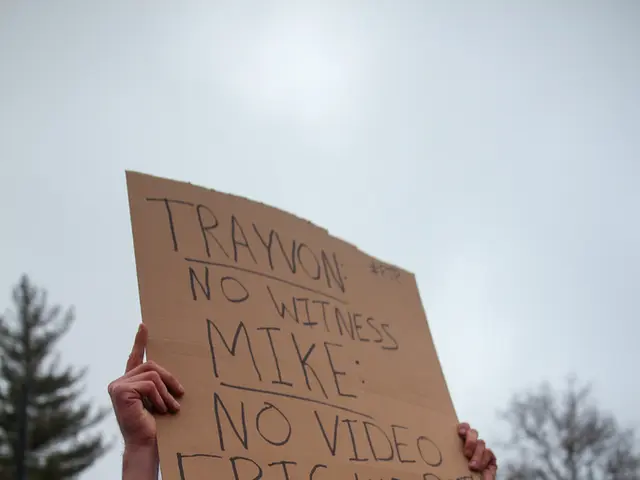Unmanned Aerial Warfare: Russia's New Drone Troops Emerge Amidst Ongoing Conflict
Russia is developing autonomous aerial fleets, independently.
In a significant move, Russia is integrating drones as a distinct weapon class within its military forces, following Ukraine's lead. This announcement was made by President Vladimir Putin at a meeting with government and army representatives in Moscow.
"The effectiveness of unmanned aerial vehicles in combat is growing rapidly," Putin stated, highlighting the increasing role of drones in aerial warfare. Recent reports suggest that drones account for approximately half of the enemy targets destroyed or damaged.
Last night, Russian combat drones were once again deployed to target areas in Ukraine, triggering air raid sirens in the east. However, no reports of hits or damage have been released yet. As the aerial warfare evolves, Russia is also working on enhancing its air defense capabilities, according to Putin.
Russia currently possesses a substantial arsenal of air defense systems, but the defense is reportedly thinner in the rear regions. Ukrainian long-range drones have often targeted military and industrial facilities far from the frontlines, presenting a challenge for Russian defenses.
Ukraine developed its drone brigades back in June 2024, incorporating various types of drones and collaborating with the industry in their development. instruments like armed remote-controlled boats, combat or mine-clearing robots, and drone pilots are also deployed across various troop units.
Given the rapid pace at which aerial warfare is evolving, Russia requires a versatile system that can effectively neutralize airborne threats in any situation, Putin added.
While the frontline is well-guarded, the defense is relatively weaker in the rear. Ukrainian long-range drones have repeatedly hit industrial and military facilities beyond the frontlines.
The recent meeting, led by Putin, aimed to discuss future arms projects. Despite being Russia's National Holiday, the United States extended congratulations for the first time in years, offering a glimmer of hope for improved relations. Ukraine, however, criticized this move.
Meanwhile, Ukrainian President Volodymyr Zelensky claimed that the Ukrainian army has been successful in halting the Russian offensive in the Sumy region. "Our units in the Sumy region are gradually pushing the occupiers back," Zelensky stated in a video message. However, there was no independent confirmation of his claims, and maps from military bloggers suggest continued Russian advancement.
Russian troops, numbering an estimated 65,000, have amassed near the Sumy border, with the intention of creating a buffer zone, according to Ukrainian military estimates. Along the entire frontline, there have been 168 Russian storming attacks, as per the Ukrainian General Staff's evening situation report.
Sources: ntv.de, mbr/dpa
Insights: Rising Significance of Drone Warfare
Russia is focusing on integrating drones as a separate weapon class in its military, aiming to improve its aerial warfare capabilities. This move comes after Ukraine adopted a similar strategy, integrating drones into various branches of its military. Drones have been instrumental in recent warfare and are expected to play an increasingly crucial role in future conflicts.
Russia's drone warfare strategy includes the development of AI/ML drones, creation of joint situational awareness systems, and the establishment of training centers for drone troopers. Ukraine, on the other hand, is utilizing AI-assisted systems for targeting and situational awareness, advanced situational awareness systems for gathering and analyzing data, and countering Russian drone capabilities by targeting drone factories and disrupting production.
References:1. TheDiplomat.com2. SCMP.com3. Rusi.org4. Thebell.io
The European Union, reflecting its commitment to the implementation of the Lisbon strategy, may take notice of the escalating use of drone technology in the realm of politics and general news, particularly in the context of ongoing conflicts such as that in Ukraine. As the integration of drones becomes a distinct weapon class within Russia's military forces, technology advancements in the field of unmanned aerial vehicles and air defense systems are likely to increase in importance, shaping the course of future military strategies.








